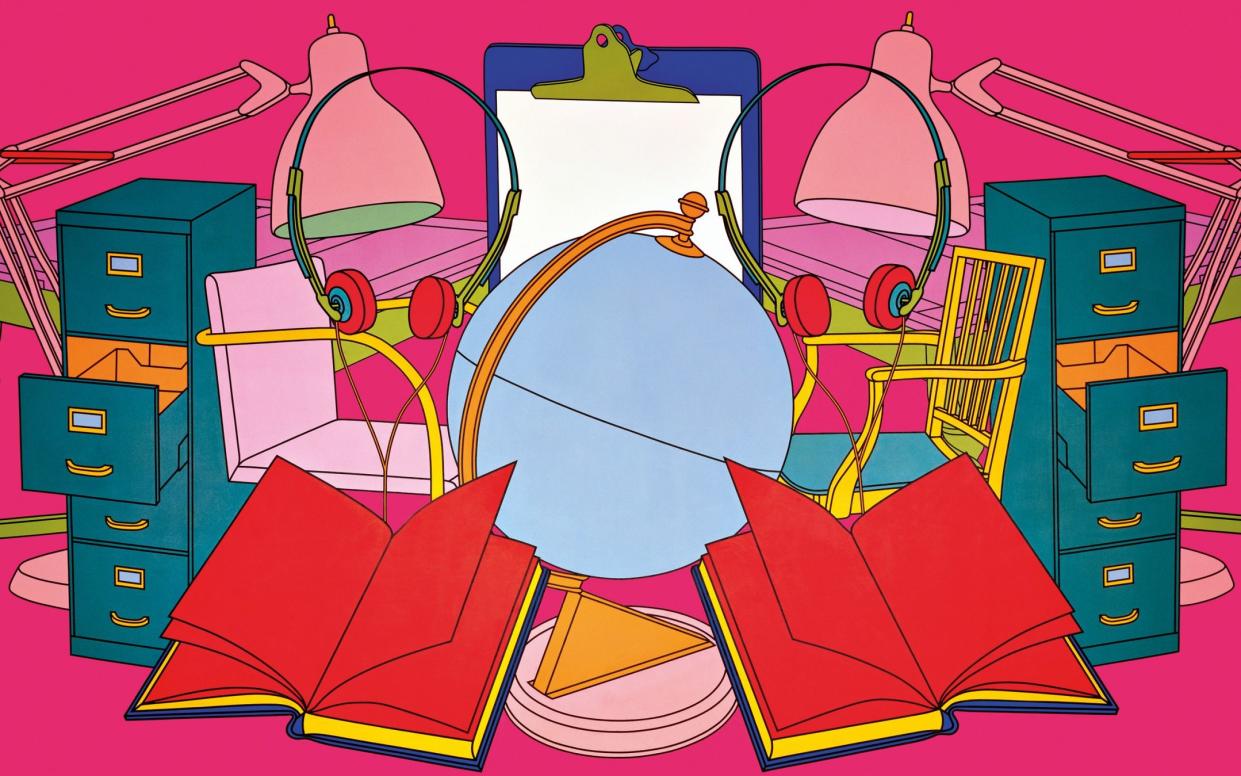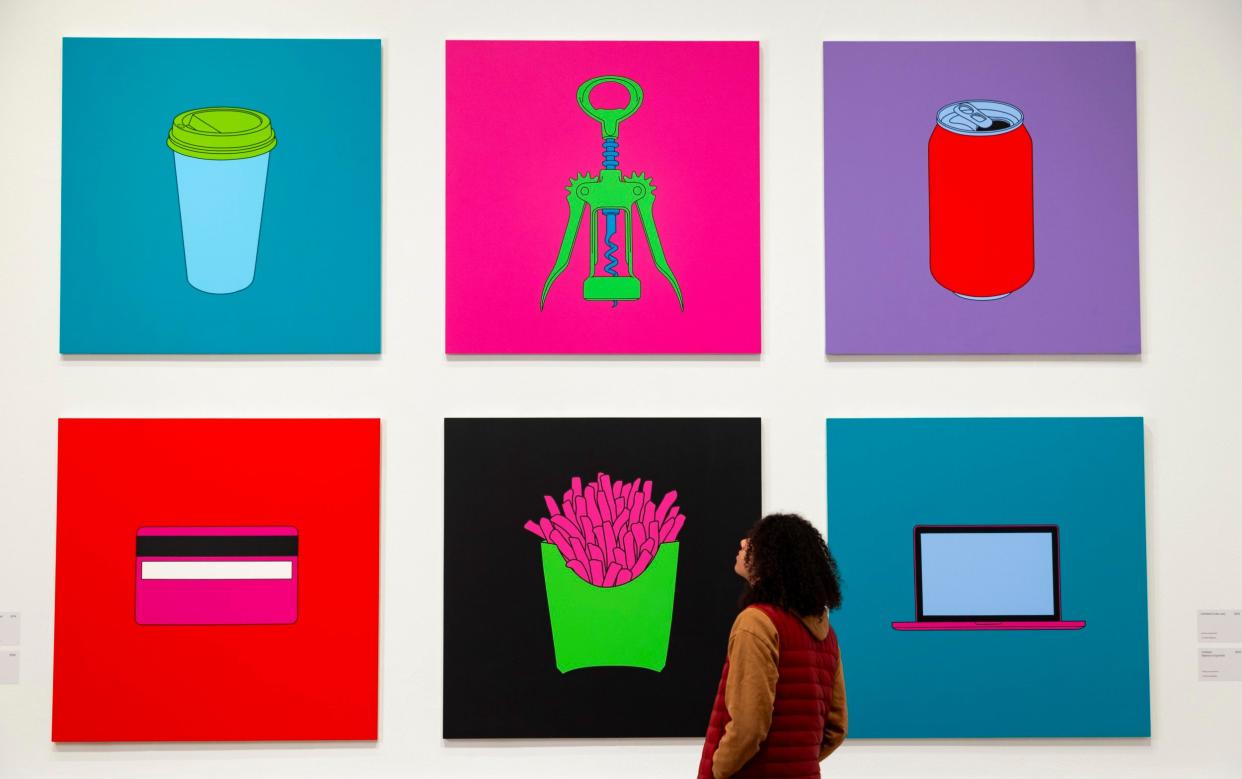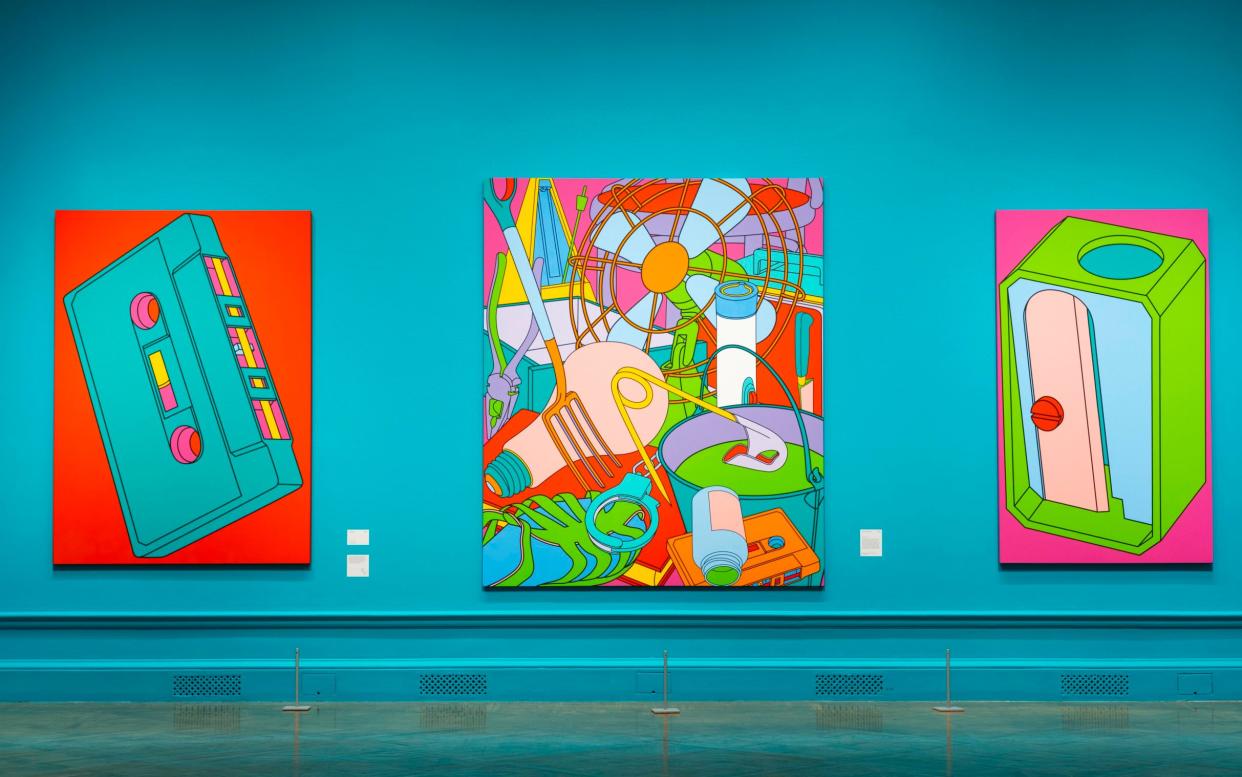Michael Craig-Martin: our Day-Glo chronicler of modern life makes junk look good

How do you know when you’re, well, getting on a bit? For me, the penny dropped midway through Michael Craig-Martin’s new retrospective at the Royal Academy. Contemplating one of his vast, bright acrylic paintings of a humdrum object, I found myself dumbfounded by a label contextualising its motif. Since when did a cassette tape require an explanation?
Yet, this is how it goes with Irish-born Craig-Martin, who still, at 83, considers himself a chronicler of modern life. After a spell as a riddling conceptualist, he started, in the 1970s, creating blank, quasi-technical crepe-tape wall-drawings of everyday things: clipboards and safety pins; can openers, ice-cube trays, and (a favourite, this) desktop globes. Eventually, he suffused this imagery with neon-bright colours. You’d find similar hues on a poisonous frog.
And, inevitably, over time, various subjects, including that cassette (depicted, in the painting at the Royal Academy, as a gigantic chunk of teal-and-pink plastic, with a spool of yellow tape), became outdated, obsolete. What’s new and covetable today will be unattractive, even worthless, tomorrow. This is the perniciousness of consumerism.
The peculiar thing is that Craig-Martin insists his art isn’t “social critique” – which may explain his detractors. People, I suspect, write him off as a one-trick pony, churning out vivid but superficial “portraits” of isolated, levitating objects such as laptops and iPhones. His conceptual work can feel faddish and clever-clever; his later re-workings of famous artworks are slick and short on inspiration.
He also loves punning, tricksy game-playing, which may put some visitors off; if you’re after swashbuckling gestural mark-making, this show ain’t for you. As for his screensaver-like digital portraits, with their looping colours: they seem almost comically glib.

And, although the exhibition’s designers try to have some fun, by making it appear that, say, huge headphones printed upon a wall fit snugly around an imposing doorway, as if its architrave were ears, in general, his Day-Glo pictures clash horribly with the grand galleries at Burlington House.
Yet, Craig-Martin is a craftier artist than he’s given credit for. His precise, pared-down pictures are, of course, contemporary still lifes; Common History: Conference (1999) somehow evokes the cluttered table in Hans Holbein’s The Ambassadors (1533). But – and here’s the crux – like all still life, these are paintings shot through with an awareness of mortality and waste. Some of the imagery at the RA – pills, a facemask, a syringe – alludes to disease and death. Fire extinguishers and handcuffs hint at catastrophe; an acid-green corkscrew calls to mind a skeleton; a safety pin bigger than a broadsword could cause serious damage. Worldly things can be delicious, but they hardly nourish the soul. “Vanitas” is one picture’s subtitle.

Other meaty themes become apparent, too. With its provocative title, and a closet-like locker in the background, Pricks (2000) is surely a not-so-coded painting about gay sex. An image of a credit card resembling something by Mark Rothko cleverly skewers the appeal of blue-chip art for those with status anxiety and bottomless pockets.
And, thanks to Craig-Martin’s sophisticated designer’s eye, his most forceful, charismatic paintings – such as Eye of the Storm (2003), like a disturbing close-up of landfill, groaning with imperishable junk – successfully depict great airless pile-ups of inanimate stuff, swaying together in some never-ending dance of death. Here is our world, Craig-Martin’s pictures seem to say. And it’s heading for the tip.
From Sept 21; information: royalacademy.org.uk


